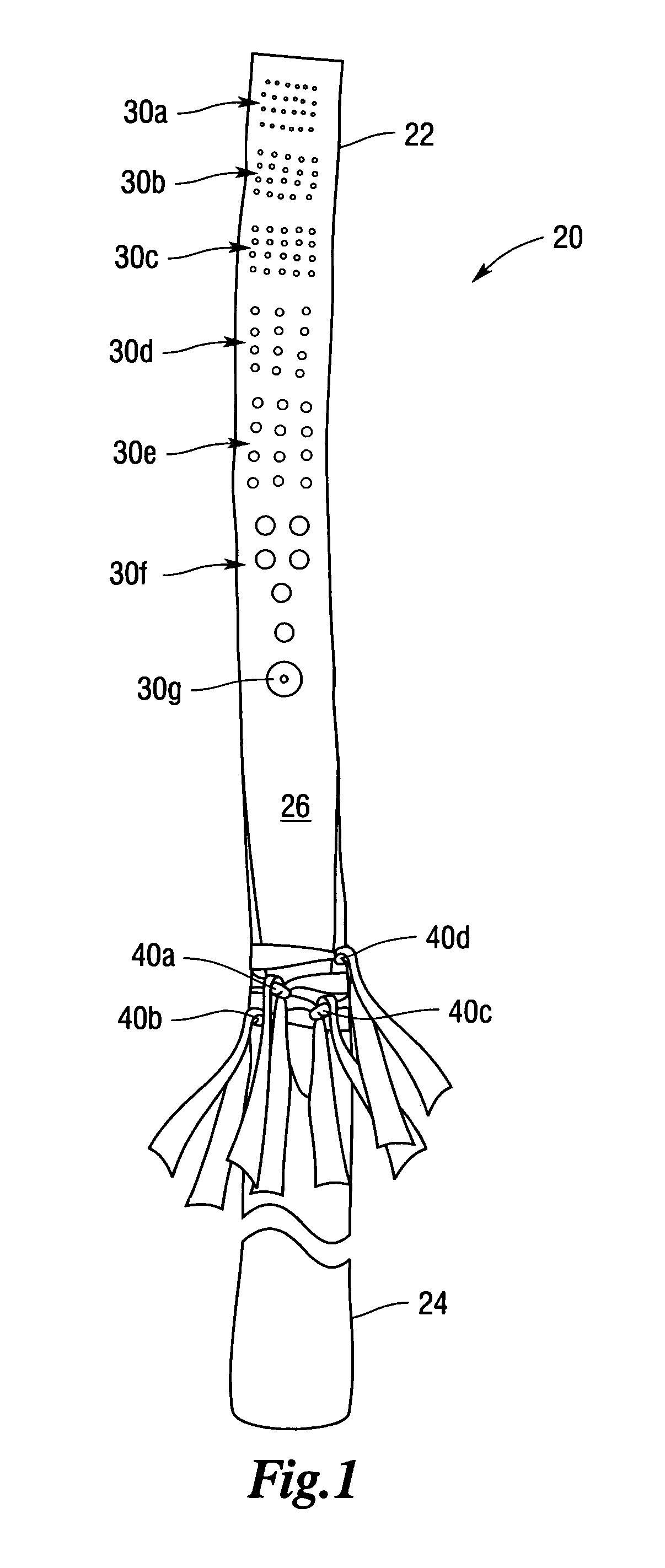Native bee propagation pole and method of use
- Summary
- Abstract
- Description
- Claims
- Application Information
AI Technical Summary
Benefits of technology
Problems solved by technology
Method used
Image
Examples
Embodiment Construction
)
[0011]A first embodiment of the bee propagation pole of the present invention is depicted in FIG. 1 generally at 20. Bee propagation pole 20 comprises a length of untreated standing deadwood timber preferably harvested from a region having weather which similar to that where the propagation is to take place. The deadwood timber will preferably be selected from 2″ to 6″ in diameter and its length will typically be trimmed to a 3′ to 9′ above ground range. An upper region 22 of bee pole 20 is shaved to provide a flat face 26. Pluralities of sets of holes 30a, 30b, 30c, 30d, 30e, 30f and a solitary large diameter hole 30g afford propagation habitat for upwards of 8 different species of native solitary bees. Diameters of holes 30 begin at 0.060″ and go up to 0.750″, each diameter of hole attracting a different group of species of bees. Typically, each set of holes will be drilled to a uniform depth of 0.5″ with the exception of one hole being drilled to a depth of 0.75″. This deeper ho...
PUM
 Login to View More
Login to View More Abstract
Description
Claims
Application Information
 Login to View More
Login to View More - R&D
- Intellectual Property
- Life Sciences
- Materials
- Tech Scout
- Unparalleled Data Quality
- Higher Quality Content
- 60% Fewer Hallucinations
Browse by: Latest US Patents, China's latest patents, Technical Efficacy Thesaurus, Application Domain, Technology Topic, Popular Technical Reports.
© 2025 PatSnap. All rights reserved.Legal|Privacy policy|Modern Slavery Act Transparency Statement|Sitemap|About US| Contact US: help@patsnap.com


